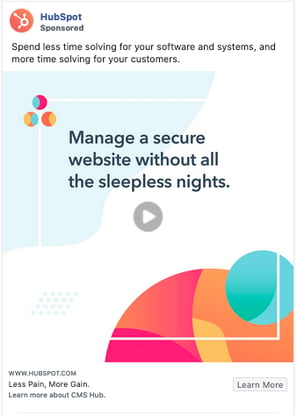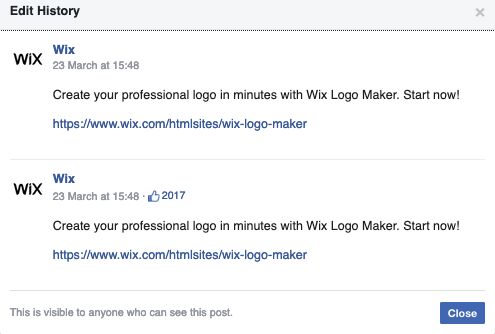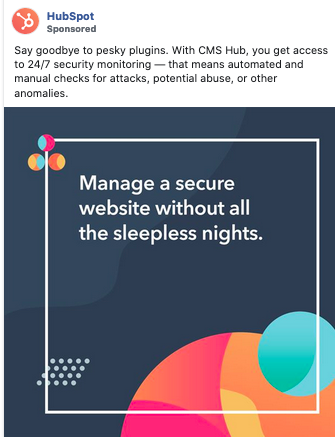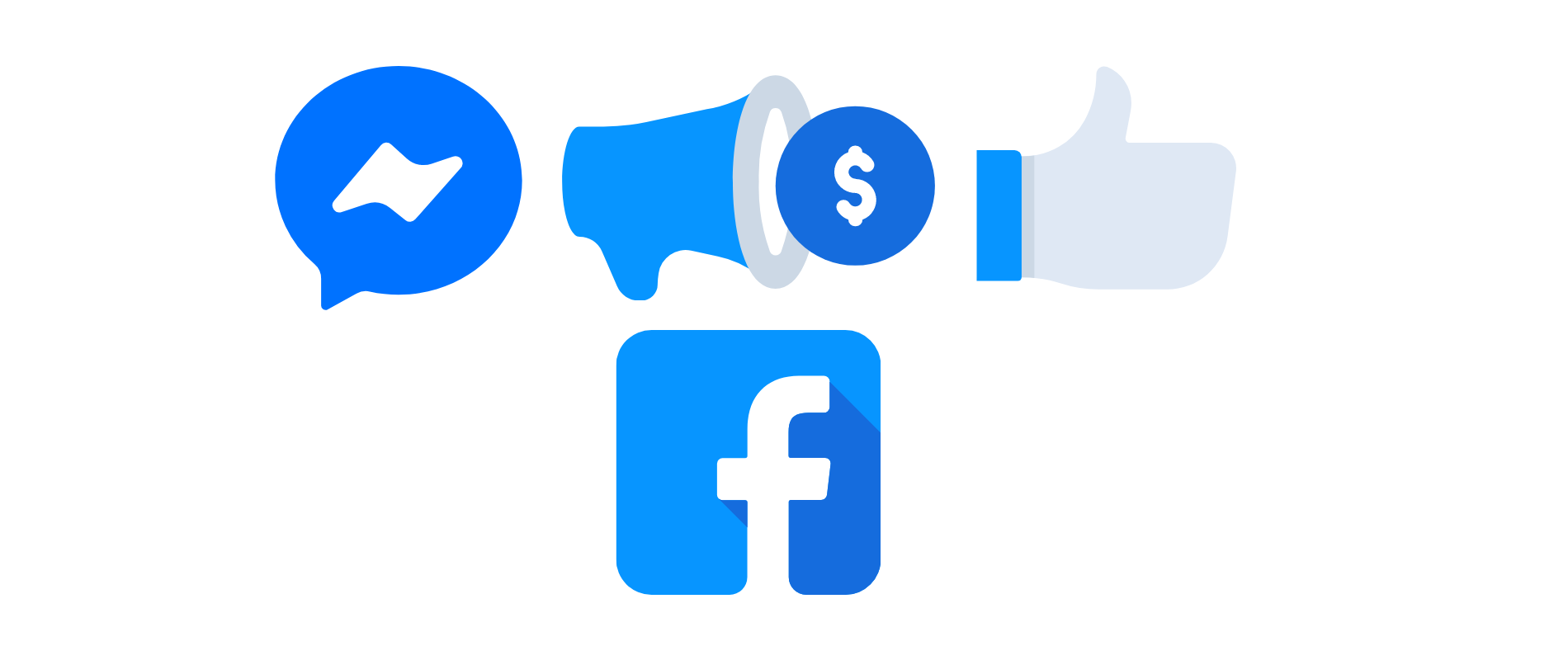Deciding where to allocate your marketing budget can be difficult; you need assurance that the platform you choose is suitable for your business and will put you in front of the right audience. With an expected 42.27 million UK users by 2022, Facebook remains a key player as a source for lead generation.
SaaS B2Bs need the ability to segment their audience, and effectively time and automate their offers in order to nurture their leads. Facebook offers all of these capabilities and more, making it the top choice for 91% of B2B marketers. It's important to note, however, that SaaS B2B requires a slightly more unique approach; sales may have a longer cycle, and the purchase is rarely as simple as "click and download". Often, your sales team will have to have a conversation with the prospect, get more details about their business, and potentially customise the offer to ensure the customer receives maximum value.
Facebook is an essential component in a SaaS marketing strategy, allowing you to personalise your content and reach audiences systematically by making sure each advert speaks to your buyer personas in direct relation to their position in the marketing funnel.
What are the different Facebook Ad types?
If there's one thing you get with Facebook, it's options. Knowing which ad format to use for your campaign and where it should be placed is crucial for generating high-quality leads. So, without further ado, here are the Facebook Ad formats you'll want to know about:
- Lead ads
- Video ads
- Carousel ads
- Boosted page posts
- Link click ads
- Instant experience ads
- Dynamic ads
- Collection ads
Carefully selecting and combining Facebook Ad formats to nudge your customer along the buyer's journey is a very important part of your SaaS marketing strategy.
Facebook Ad types for B2B SaaS success
Video ads
Your Facebook video ads can appear in-stream (advertising that plays in a video), in your audience's feed or stories section of Facebook. The key is to create visual experiences for your audience so that they will watch the ad and take the desired action.
Below is an example of a HubSpot video ad that would appear in someone's feed. In 10 seconds, the ad aims to catch the viewer’s attention by addressing a common pain point for marketers, leading prospects to learn more about the CMS Hub. 
Instant experience ads
Once a viewer clicks on your ad, a full-screen experience opens up on their mobile device – this type of ad was formerly known as a canvas ad. Its purpose is to grab attention and immerse your lead into your story.
Lead ads
This is an in-app type of add where the lead doesn't have to leave the platform to gain access to your offers. Perfect for capturing a prospect’s email address with minimal effort from the user.
Boost page posts
This type of advertising allows you to take what would have been a limited-reach organic post, and turn it into a supercharged ad that gets presented to the right audiences.
A quick look at the edit history of a Wix ad allows you to see that the advert was created in 2017. The advert clearly gets optimised and republished, gathering extra social proof and engagement each time.

Link click ads
Essentially, you are creating one big call-to-action with a link click ad. The text and imaging you use in your Link Click Ads should entice leads to click; once they do, they will be taken to your website or landing page. This type of advertising can act as a quick barometer for how engaging your ads are and whether they are generating the right kind of interest.
In the ad below, HubSpot is A/B testing a variant of the video ad we previously shared. Note that the copy in the ad remains the same, but more text has been added in the description section, providing more information about the benefits of the CMS.

How to optimise your Facebook Ads
To get the ROI you need and to outpace your competition, continuous optimisation is a crucial facet of your Facebook Ads management.
Likes and shares are social proof, use them
If you have an existing ad that has performed well and gotten plenty of attention, be sure to select the "Use Existing Post" option when managing your ad. By doing this, you can collate all the engagement you've had for a campaign in a single ad. As your ad gathers momentum, select this post every time you set up a new campaign so that prospects will be encouraged by the likes and shares it has received.
Time things right
Your buyer personas are very likely to have routines and patterns when it comes to logging in and browsing through Facebook. Use the performance data from your previous campaigns to locate the peak performance timeslots and create a custom schedule for your ad to target prospects at this time.
Test, always test
Not everything you put out will be a hit, no matter how much time or attention to detail has gone into planning your campaign. Sometimes, your ads will need to be redesigned entirely, other times, a simple tweak in the copy, an enhanced image, and a more careful approach to targeting will quickly shift the needle. Don't be afraid to try variations of your ads that starkly contrast the original.
Take your converted audience out of the equation
Presenting the same ads to someone who has already purchased from you can become a little annoying for them. If subscribed customers are seeing the same ads, you're not putting in the effort to move them along to the next stage of your marketing funnel – for example, upselling. Create a Custom Audience for converted leads and exclude them from your new campaigns. Your budget should go further, keeping you in line with inbound marketing best practices.
Retarget
Audiences that have already interacted with your brand must be kept engaged. These more qualified audiences are identified through pixels (more about that later on) or other offline events that have been reported to your CRM. If a visitor has entered your marketing funnel, either through your website or by engaging with your social media content, they should slot neatly into an audience category that you can then target with the most relevant ad format and content type to move them along the buyer's journey.
Why your website conversions funnels matter
Facebook alone shouldn't be your only focus. The use of the platform's advertising features fall, as always, within your greater digital marketing strategy. Setting up conversion funnels on your website will make your adverts that much more effective and get you sustainable results.
Each advert you promote should correlate with your buyer's journey. It's essential to install the Facebook Pixel on your website so that you can retarget your audience according to the level of interaction they're giving you and their position in the buyer's journey.
On-site conversion tracking is essential to making your paid channels a worthwhile investment. With the Facebook Pixel, you can track nine different conversion events as well as custom ones that you define yourself. You can then track performance on campaigns and ad sets, generating reports that allow you to continuously optimise on-site conversions, and generate higher quality leads.
When used correctly, Facebook will help you find high-quality leads that are genuinely interested in your SaaS B2B offer. That's because, behind every business, there is an individual who is very likely to be searching online for solutions, participating in Facebook topic groups, and using the platform as a tool for lead generation themselves.
Stay Updated with Our Latest Insights
Get expert HubSpot tips and integration strategies delivered to your inbox.



